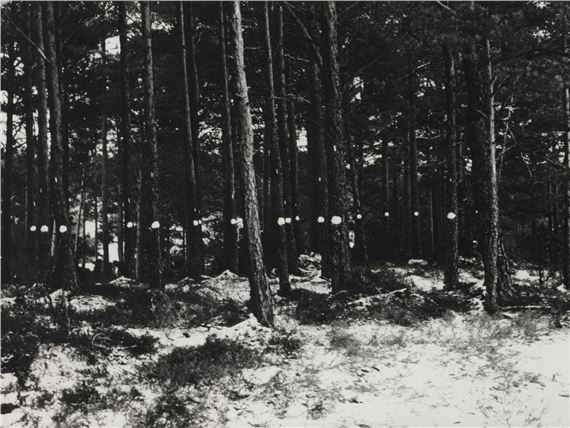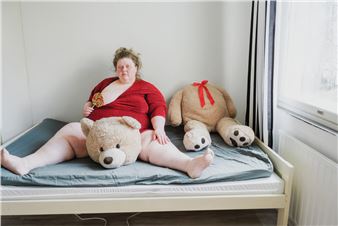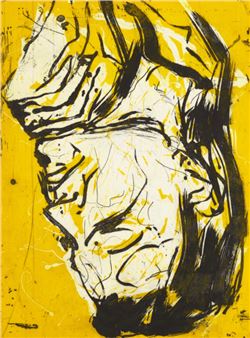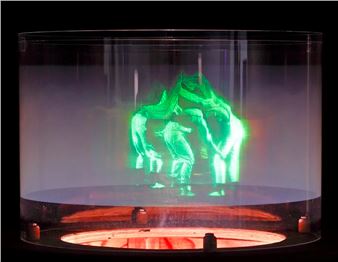Earthworks
In spring 2024 Bergen Kunsthall presents an extensive thematic exhibition exploring the role of art in the history of ecological resistance movements in the Nordic countries. At a moment when ecological questions вҖ“ and their relation to questions of social justice and colonial conditions вҖ“ are becoming increasingly pressing, this project looks at artistic work dealing with nature from a multiplicity of viewpoints, with works by visual artists, writers and activists, working as individuals or in groups. The exhibition also includes several sections of documentary material selected by research collaborators, including Marius HeyerdahlвҖҷs early eco-activist project Den siste alke (The Last Auk) and the history of the MГЎze group (MГЎzejoavku) art collective.
Nature is one of the crucial topics in Nordic art histories. Through landscape painting and an interest in stunning geographical features during the 19th century, artists developed regionally specific working fields. In Norway, the images of coastal and mountain landscapes became a pillar of national identity and are still featured in marketing today. On the other hand, since the 1960s, the precarity of nature has become an important topic for many artists, with concern for the environment and the future of nature as well as humans who depend on these resources. In this exhibition, Bergen Kunsthall explores the relevance of nature for artistic debates, how nature is approached, how nature is conceptualised and constructed: what do artworks tell us about our changing relationship to nature, but also how we conceptualise ourselves as human beings? How do we understand ourselves as part of the environment (and nature)?
The exhibition draws historical lines between some of the earliest examples of what is today known as Land Art and recent generations of artists treating nature as a collaborative partner. Artists and works in the exhibition include Tina BuddebergвҖҷs Dreamvalley, in which humans and animals co-exist, Jenna SutelaвҖҷs compost installation Vermi-Cell where soil and worms generate power for an audio piece and works by Carola Grahn whose works often combine dark humour, popular culture and SГЎmi traditions. These works are presented alongside historical works by pioneers such as BГҘrd Breivik, Monica Sjöö, Annette Holdensen and Jan HГҘfstrГ¶m among others.
Another focus of the project is on ideas of collaboration and community building, with many contributions that include talks, dinners, workshops and performances, using the exhibition as a site for participation and a platform for multiple voices.
The exhibition is curated by Axel Wieder and Silja Leifsdottir.

Recommended for you
In spring 2024 Bergen Kunsthall presents an extensive thematic exhibition exploring the role of art in the history of ecological resistance movements in the Nordic countries. At a moment when ecological questions вҖ“ and their relation to questions of social justice and colonial conditions вҖ“ are becoming increasingly pressing, this project looks at artistic work dealing with nature from a multiplicity of viewpoints, with works by visual artists, writers and activists, working as individuals or in groups. The exhibition also includes several sections of documentary material selected by research collaborators, including Marius HeyerdahlвҖҷs early eco-activist project Den siste alke (The Last Auk) and the history of the MГЎze group (MГЎzejoavku) art collective.
Nature is one of the crucial topics in Nordic art histories. Through landscape painting and an interest in stunning geographical features during the 19th century, artists developed regionally specific working fields. In Norway, the images of coastal and mountain landscapes became a pillar of national identity and are still featured in marketing today. On the other hand, since the 1960s, the precarity of nature has become an important topic for many artists, with concern for the environment and the future of nature as well as humans who depend on these resources. In this exhibition, Bergen Kunsthall explores the relevance of nature for artistic debates, how nature is approached, how nature is conceptualised and constructed: what do artworks tell us about our changing relationship to nature, but also how we conceptualise ourselves as human beings? How do we understand ourselves as part of the environment (and nature)?
The exhibition draws historical lines between some of the earliest examples of what is today known as Land Art and recent generations of artists treating nature as a collaborative partner. Artists and works in the exhibition include Tina BuddebergвҖҷs Dreamvalley, in which humans and animals co-exist, Jenna SutelaвҖҷs compost installation Vermi-Cell where soil and worms generate power for an audio piece and works by Carola Grahn whose works often combine dark humour, popular culture and SГЎmi traditions. These works are presented alongside historical works by pioneers such as BГҘrd Breivik, Monica Sjöö, Annette Holdensen and Jan HГҘfstrГ¶m among others.
Another focus of the project is on ideas of collaboration and community building, with many contributions that include talks, dinners, workshops and performances, using the exhibition as a site for participation and a platform for multiple voices.
The exhibition is curated by Axel Wieder and Silja Leifsdottir.
Artists on show
- Adrian Bugge
- Annette Holdensen
- Bård Breivik
- Beth Laurin
- Carola Grahn
- Cilla Ericson
- Damien Ajavon
- Egil Storeide
- Gert Aspelin
- Inghild Karlsen
- Ingrid Elsa Maria Ogenstedt
- Jan Håfström
- Jannik Abel
- Jenna Sutela
- Johanne Hestvold
- Jon Benjamin Tallerås
- Jumana Manna
- Lada Suomenrinne
- Lars Tcf Holdhus
- Marius Heyerdahl
- Monica Sjoo
- Mustarinda
- Sata Taas
- Silje Figenschou Thoresen
- Sissel M. Bergh
- Tina Buddeberg
Related articles
Earthworks showcases pioneering work on Nordic eco-art, but the exhibition's most pressing questions do not take proper flight.
вҖңEarthworksвҖқ is an extensive thematic exhibition exploring the role of art in the history of ecological resistance movements in the Nordic countries.

 ARTISTS
ARTISTS















